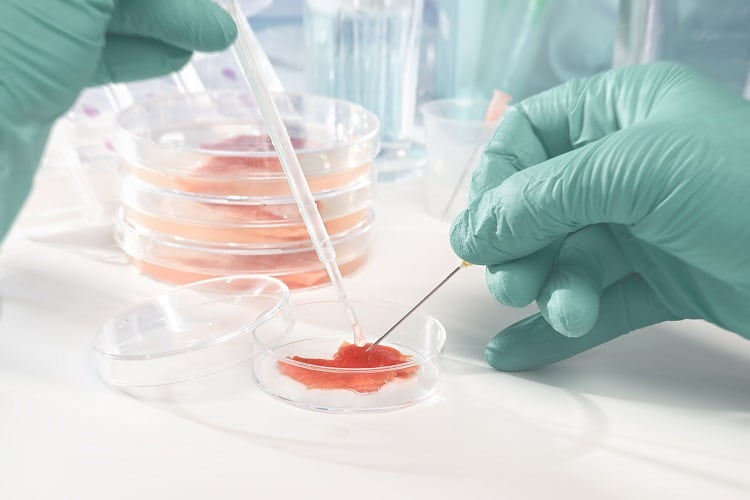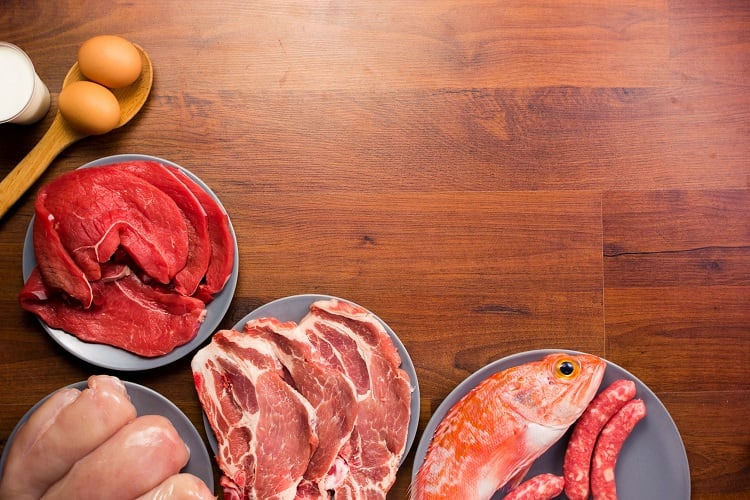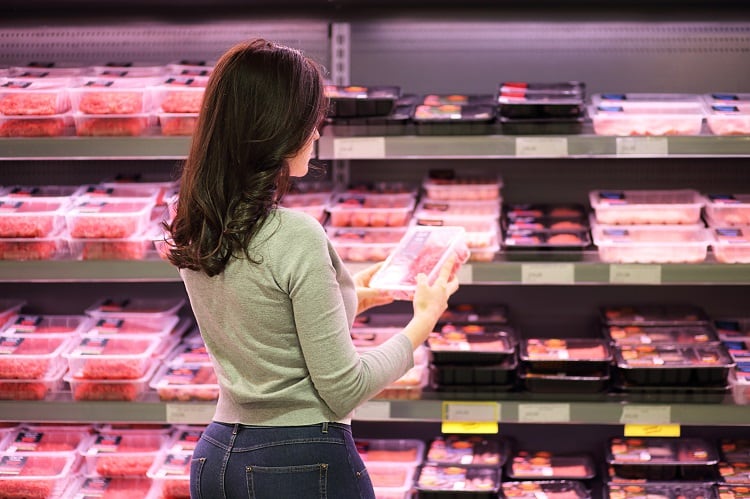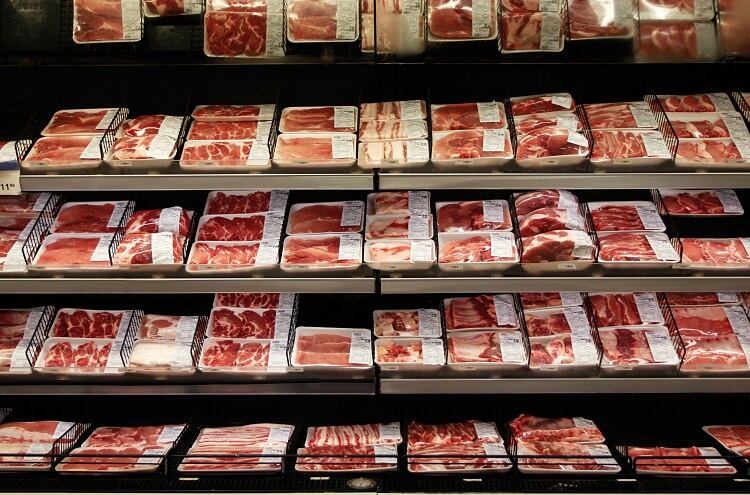Having demonstrated successful proofs of concept, most advanced cultivated meat and seafood companies are now producing products at pilot scale.
In so doing, they are also preparing to generate the first wave of commercialised products into the market. Just one business is there already: Eat Just received regulatory approval in Singapore late last year to sell its cultivated chicken ingredient into foodservice.
While this is surely an encouraging sign for the market, cultivated meat has yet to achieve mass commercialisation, and consequently, mass disruption.
If, however, the cultivated meat industry was to set a target of taking a 10% share of the global meat market by 2030, what would this look like? The Good Food Institute (GFI), which supports the development of alternative proteins, commissioned a techno-economic analysis to find out.
10 x bigger than the biggest factory
Supplying 10% of the global meat market is ‘certainly an ambitious target’, according to Blake Byrne, former Business Innovation Specialist at GFI, but told this week’s Industrializing Cell-Based Meats & Seafood event it is ‘not out of step’ with some industry analysts, consulting firms, and investment banks, which have made projections in this industry.
By 2030, 10% of the global meat market is estimated at 40m metric tonnes. Drawing on CE Delft’s cultivated meat techno-economic analysis, GFI has sought to determine how many factories would be required to satisfy that demand.
“This analysis suggests that one single, hypothesised facility is capable of producing about 10 kilotons of cultivated meat annually,” Byrne told delegates. Therefore, in order to produce 40m metric tonnes of cultivated meat, each facility would need to house around 130 bioreactor lines.
Each bioreactor line would require a 10,000L stirred-tank bioreactor and four 2,000 perfusion bioreactors. In total, each factory must be able to host about 2,300,000L of mammalian, avian, or piscine cell culture capacity.
“For reference, the largest mammalian cell culture facility that has ever been constructed was by Samsung Biologics, a global contract development and manufacturing organisation (CDMO) for the pharmaceutical market,” explained Byrne. “It houses between 250,000-350,000L of mammalian cell culture capacity.”
Acknowledging that meat production differs significantly from pharmaceuticals, the GFI representative continued: “For reference, this hypothesised cultivated meat factory would need to be able to host about 10 times the volumetric capacity for cell culture than the largest facility that’s ever been produced for those purposes.”
Do we need ‘entirely new’ bioreactor designs?
In the short-term at least, GFI expects cultivated meat companies to employ bioreactor designs already on the market. For the 10% meat market share by 2030 hypothesis, Byrne envisages 130 10,000L stirred-tank bioreactors in each facility.
“There is obviously a hypothesis that we could go larger, to maybe 20,000L bioreactors,” he explained, but stressed going above 10,000L in the mammalian cell culture space is ‘extraordinarily rare’. Further analysis could be required to examine the cost-benefit of increasing volumetric capacity vs price.
If industry can achieve large-scale culture at high densities, by convincing mammalian cells, for example, to act like microbial cells, Byrne suggested large engineering firms could be brought in to design cultivated meat-specific bioreactors. He doesn’t expect this to be easy.
“If we are developing bioreactors that are extraordinarily novel and specific to the cultivated meat industry, I think it’s going to be a much more difficult sell, at least in the near term, to get some of these incumbent construction and engineering companies installing this at a large scale, just because that is where their expertise may not lie.”
Byrne continued: “But ultimately, that may be required in order for us to get cultivated meat where it needs to be. If that is the case, where we need to develop entirely new bioreactor designs, then I think it’s just reasonable for us to expect a timeline for large-scale commercialisation of cultivated meat that moves out a little bit. Which I don’t think is a bad thing, but I think is possible.”

If looking to the pharmaceutical industry for comparisons, one must query whether using single-use bioreactors could offer benefits to the cultivated meat sector.
In bioprocessing, using single-use bioreactors means no cleaning process, a decreased downtime and turnaround time, a reduction in cross-contamination risk, and significantly decreased operating costs and capital investment.
CDMO WuXi Biologics recently opened the largest cell culture facility in the world using entirely disposable bioreactors. “That is a significant cost-cutting measure for them to not use stainless steel bioreactors at large scale,” explained Byrne.
“Obviously, the disposable bioreactor concept in biopharmaceuticals could be really compelling for them. But I don’t think that’s tenable at the scale that we actually need to produce cultivated meat, at least at the largest industrial scale, due to the volume of waste that we would be producing.”
Byrne does, however, believe ‘quite a significant inquiry’ should be conducted into ways industry can reduce capital expenditure at large-scale manufacturing facilities.
“Because if we go the way of the biofuels industry, capital expenditure really was the death knell for biofuels companies. It’s going to be a tough battle, Again, it’s surmountable potentially. But it’s going to be a tough battle.”
Location, location, location
So how many factories, housing 130 bioreactor lines, would be needed to meet this hypothesised 2030 ambition? “We would need in the neighbourhood of 4,000 of these facilities to be operating at pretty much full capacity by 2030,” said Byrne.
The potential distribution of these facilities, by region, has also been mapped according to the current share of meat production. This means that in the US, for example, which currently produces about 15% of animal meat production globally, around 500 of the total 4,000 facilities would be expected to be located on US soil.
Alternatively, it could reasonably be expected that cultivated meat factories be built where cultivated meat activity is currently most concentrated – notably the US, Europe, and Asia Pacific.
This could see around 750 factories be built in the US, close to 1,000 in Europe, and around 1,500 potential sites constructed in Asia Pacific by 2030 to meet the 10% market supply.
According to CE Delft’s techno-economic analysis, which Byrne stressed is ‘just one data point’, each factory could cost around $450m (€382m). A quick calculation suggests 4,000 factories at this price would cost an eye-watering $1.8trn.

When queried whether geopolitical issues could impact the market for cell-based meat production, Byrne said he could envisage a scenario where healthy competition between China and the US advanced developments.
“I think there is quite an artful way that this industry can encourage healthy competition,” we were told. “We know the story of China really getting ahead of the curve in battery production, in clean energy production.
“We can present that story to policymakers in the US, that this is another nascent industry, where if the US does not take the torch on this, other countries will. And likewise to China, I think we should be going to the government of China and presenting the same story.
“Because ultimately, I think we’re pretty agnostic as to where this technology is developed. We just want to see it developed, and developed at scale.”
Another important factor is food security. Byrne suggested he was not surprised Singapore was the first country to grant regulatory approval to a cultivated meat product, given the country imports the majority of its food. Indeed, only 7% of Singapore’s food is grown locally.
The Middle East could be another candidate to be a cultured-meat forerunner, the GFI representative suggested, as a region ‘trying to sure up their food supply’ that similarly imports a significant portion of its meat supply.
In this hypothesis, how much would cultivated meat cost?
In the GFI-commissioned techno-economic assessment, cultivated meat was able to compete with some conventional meats on costs, with production costs in the study as low as $6.43 per kg.
This is largely due to the descending cost of growth media, as the process scales. “We should be able to theoretically source cheaper input costs as we grow the supply chain for it,” explained Byrne.
As it stands, growth media can cost as much as 90-99% of overall production costs of cultivated meat. “But once we have that hypothesised facility…[a lot of the ] the overall cost of cultivated meat production on a kg basis is going to come from the capital expenditure,” Byrne continued.
With stainless steel bioreactors, those input costs are ‘still going to be significant’, said the analyst, predicting those costs to decline over time.

With production costs down to $5.66 per kg, as per the study, Byrne believes cultivated meat can start ‘significantly penetrating the conventional meat market’.
However, he suggested it needn’t get to this cost price before making an impact. Looking to impossible Foods and Beyond Meat, Byrne told delegates that for the first five years, these products have been sold at ‘quite a significant premium’ compared to conventional meats.
“They’ve been able to carve out a plenty significant share of the market that will allow them to continue to work on moving down the cost curve…I think that cultivated meat companies can potentially price their products at a significant premium, and still carve out a large enough percentage of the market, such that they can internally work on bringing down the cost curve.
“But under $10, say, per pound, then this really starts becoming relevant to not just…ultra-interested consumers.”
Update: In November 2021, a correction was made in the CE Delft report, increasing the low-end modeled production cost from $5.66 per kg to $6.43 per kg. This article was been edited to reflect the correct production cost of $6.43 per kg.





